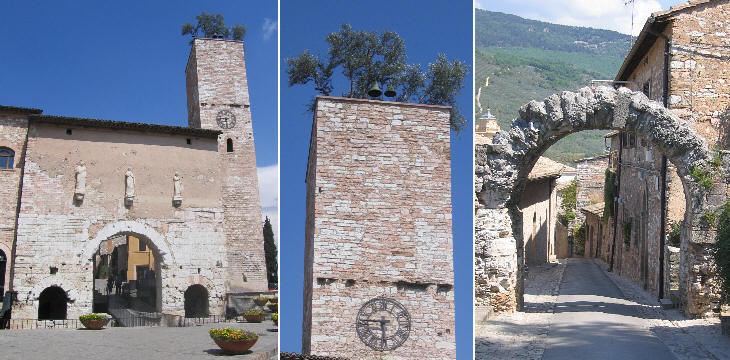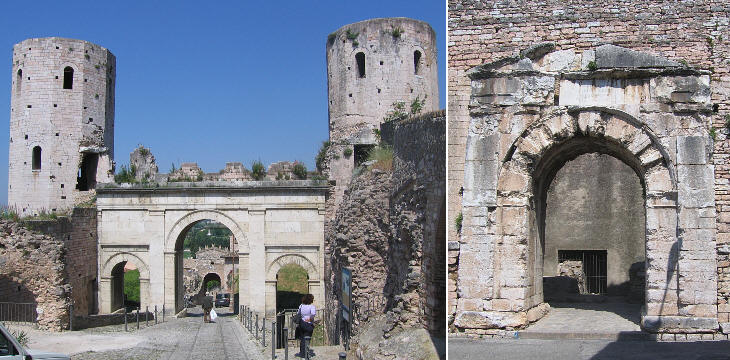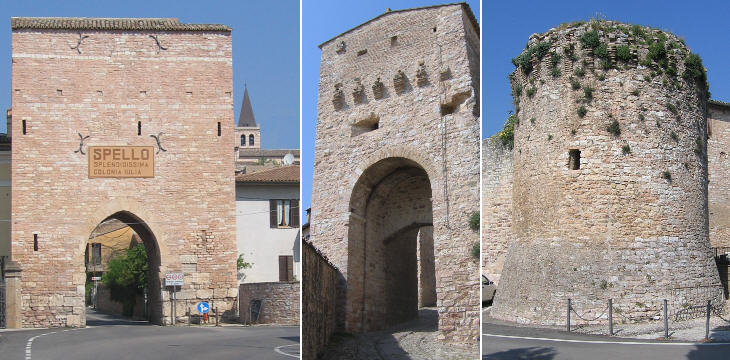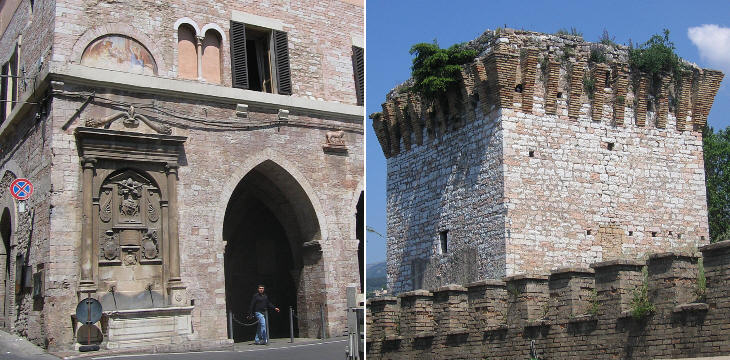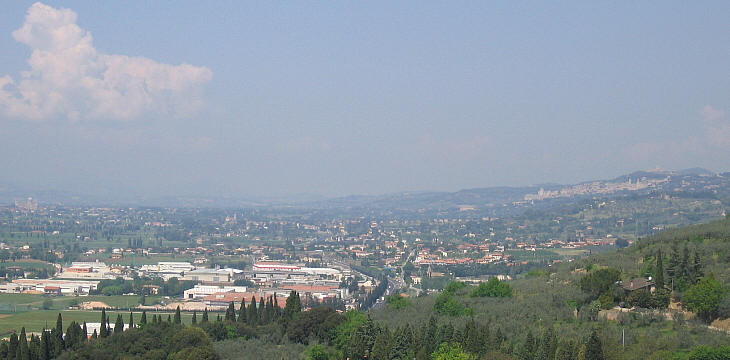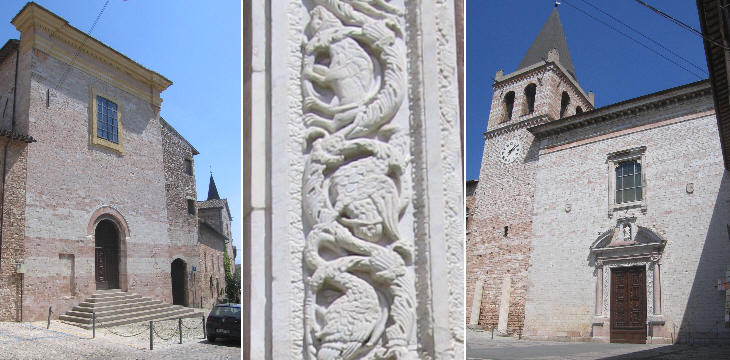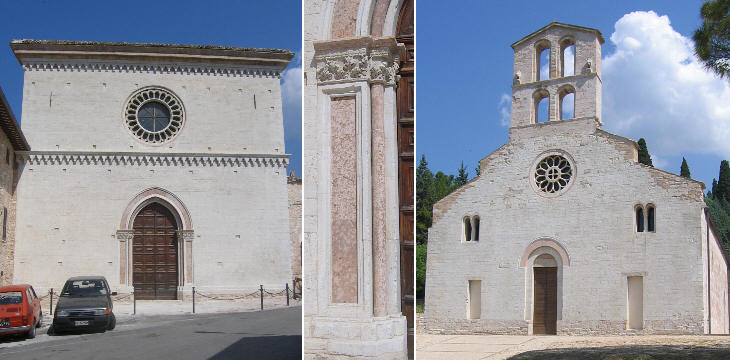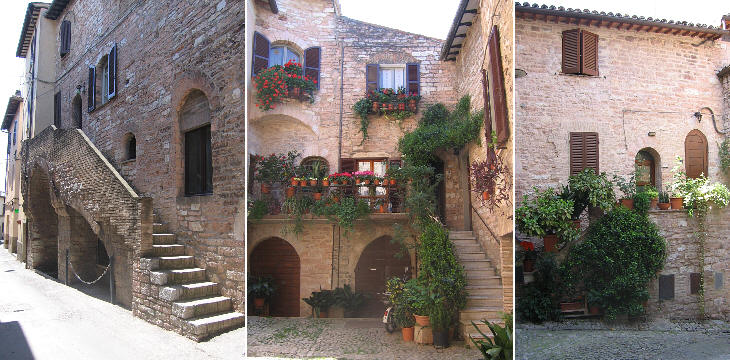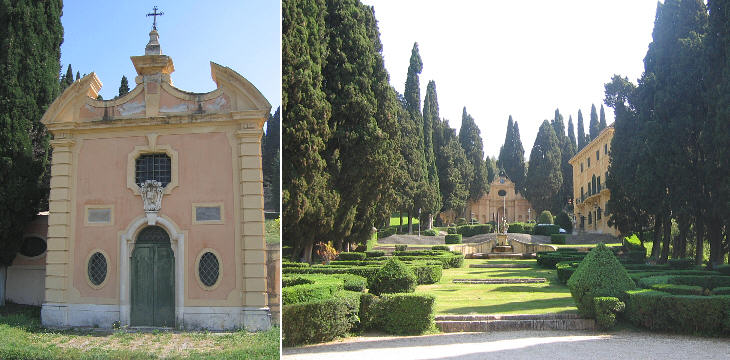  What's New! Detailed Sitemap All images © by Roberto Piperno, owner of the domain. Write to romapip@quipo.it. Text edited by Rosamie Moore. Page added in May 2007. |
Everyday a train leaves Termini at 8:14; first stop: Orte; second stop Narni; third stop Terni; fourth stop Spoleto; fifth stop Trevi; sixth stop Foligno; seventh stop ... 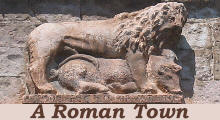 Spello Spello(statue on the faēade of Palazzo Comunale) The train leaves Foligno and heads north; in a few minutes it reaches Spello which is located on a low hill at the foot of Monte Subasio.
Emperor Augustus assigned to his veterans a large part of the northern Umbrian Valley: the settlers were also provided with enough financial support to reclaim the marshes which the River Topino formed in the lowest points of the valley. In ancient times the Etruscan dug canals to facilitate the flow of that river into the Tiber; the veterans improved the effectiveness of the canals and the region flourished: the site of Spello was chosen because it was healthier to live on a hill rather than in the plain.
The design of the new town was based on a main street which crossed it from its lowest point (Porta Consolare) to its highest one (Porta dell'Arce, arx being the Latin word for highest point): it was surrounded by walls, which served more to prevent landslides than to defend the town; the main gate had the appearance of a triumphal arch; a tall tower and other fortifications were added at a later period.
The celebrative purpose of the Roman gates is very evident in Porta Venere (named after a nearby temple dedicated to Venus), which has been freed from medieval additions and brought back to its original appearance. After the fall of the Roman Empire Spello became a possession of the Longobards and was included in the Duchy of Spoleto: the population decreased significantly and the inhabitants lived only in the very top section of the town which was turned into a sort of castle.
After the year 1000 Europe knew a period of growth; the population gradually increased and in Spello this meant that the inhabitants returned to live in the whole area of the Roman town; the towers they built next to Porta Consolare and Porta Venere belong to this phase of the history of Spello. In the XIVth century the town expanded beyond the Roman walls and around 1360 at the time of the restoration of the papal authority in Umbria, walls were built to protect also the new boroughs.
Spello, as most of the towns of the region, enjoyed a large degree of self-government, which led the inhabitants to build a large town hall to house their institutions; Cardinal Gil de Albornoz put an end to it by placing a small fortress at the top of the hill, so that his troops could control the town; in 1389 during the Great Schism the popes staying in Rome gave Spello to the Baglioni, the lords of Perugia.
The Baglioni were interested in controlling Spello because of its strategic position at the entrance to the northern section of the Umbrian valley. A belvedere located on the highest point of Spello commands a fine view over this part of the valley.
The largest churches of Spello were built along the main street, almost one next to the other; they have retained their medieval appearance notwithstanding some later modifications. The portal in S. Maria Maggiore was redesigned in Baroque style, but its medieval decorations were not lost.
The churches of Spello, similarly to those of Foligno are characterized by the use of white and pink stones. The image used as background for this page shows the white and pink decoration of the portal of another church (S. Lorenzo) showing a very elaborate use of these stones.
Spello retains its medieval atmosphere, somewhat brightened by the fact that many of its houses belong to people who keep them in good order.
The interior of the churches and in particular S. Maria Maggiore are decorated with fine frescoes, but also the sacred images one can see along the streets of Spello are quite good.
In the XVIth century some terraces built by the Romans in the immediate outskirts of Spello were used as foundations of a villa which was given its current appearance in the XVIIIth century. The terraces were most likely part of a shrine dedicated to Venus (see an example of such a shrine at Kos).
Spello was not the only ancient settlement of the area: Bevagna was another Roman town which was located just a few miles away on the other side of the valley. Let's make an excursion to Bevagna. 
1864 clickable map of Umbria |

